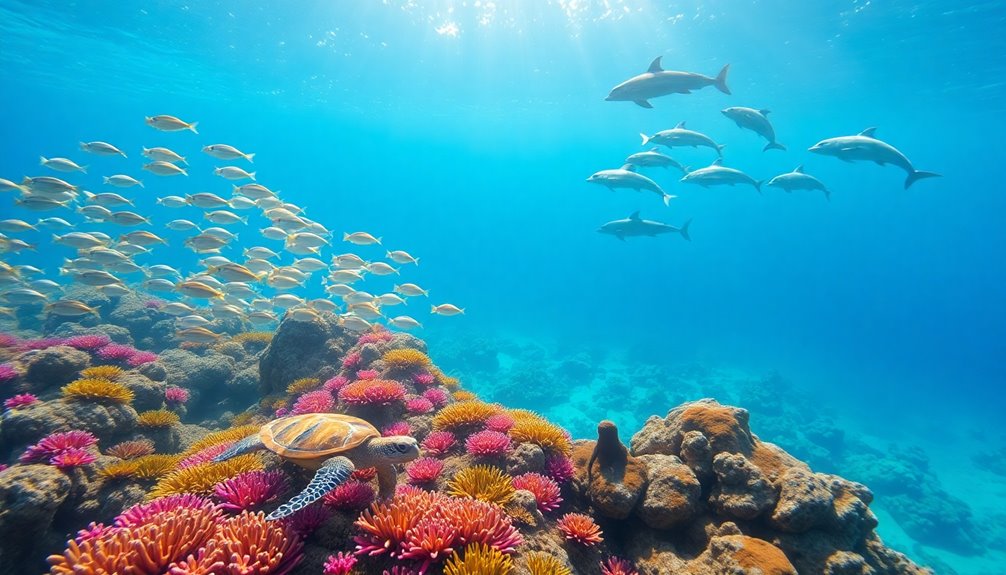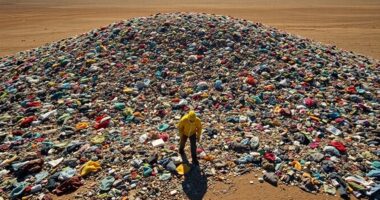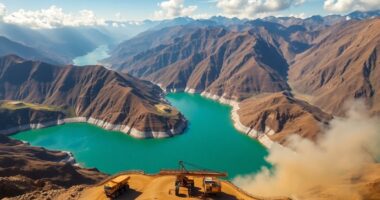Marine life is incredibly resilient and plays a vital role in addressing ocean problems. From sea turtles to seabirds, these creatures often face threats from plastic pollution, which they mistake for food. Their survival hinges on our actions to protect their habitats. With ongoing conservation efforts, such as establishing Marine Protected Areas and promoting sustainable practices, there's hope for restoration. Discover what else is being done to support these amazing species and our oceans.
Key Takeaways
- Marine species, like sea turtles, are increasingly at risk due to plastic ingestion and entanglement, prompting urgent conservation efforts.
- Organizations are developing initiatives, such as The Ocean Cleanup, to actively remove plastic waste from the oceans.
- Marine Protected Areas are established to safeguard critical habitats and promote biodiversity restoration in affected ecosystems.
- Community awareness and involvement are essential for supporting ocean health initiatives and advocating for sustainable fishing practices.
- International collaborations aim to address marine pollution comprehensively, emphasizing the need for collective action to protect ocean ecosystems.

Every year, about 8 million tons of plastic flood our oceans, wreaking havoc on marine life and ecosystems. You mightn't realize it, but about 90% of the trash in our oceans is plastic, posing serious threats to marine animals and habitats. From entanglement in discarded fishing gear to the ingestion of plastic debris, marine species face dire consequences.
Sea turtles and seabirds, for example, often mistake plastic for food, impacting half of sea turtles globally. This pollution disrupts their migratory patterns and reproductive behaviors, leading to declines in populations. Microplastics are pervasive across ecosystems, further complicating the health of marine life and food chains.
Plastic pollution severely impacts sea turtles and seabirds, disrupting their migration and reproduction, and threatening their populations worldwide.
The damage doesn't stop at marine life; pollution also affects coral reefs and biodiversity. When habitats get contaminated, you can see the ripple effects throughout the ecosystem. Pollutants bioaccumulate in fish, posing health risks to you when you consume seafood.
Moreover, climate change exacerbates these issues, causing sea levels to rise and temperatures to fluctuate, further stressing marine ecosystems.
But there's hope. Marine conservation initiatives are stepping up to combat these challenges. Establishing Marine Protected Areas helps conserve critical habitats and supports biodiversity. Sustainable fishing practices are promoted to keep ecosystems balanced, while projects like The Ocean Cleanup aim to reduce plastic waste in our oceans.
Organizations like the Trash Free Seas Alliance work tirelessly to innovate and collaborate toward eliminating plastic pollution. Nonprofits play an essential role, too. Your donations to ocean health initiatives can significantly impact marine conservation efforts.
They focus on everything from sea turtle rehabilitation to coral reef preservation and advocate for policies that protect marine habitats. International collaborations, such as the Global Partnership on Marine Litter and the Basel Plastic Waste Partnership, are also crucial for tackling marine pollution on a global scale.
Raising public awareness about these ocean issues encourages community involvement, turning the tide on marine pollution. Together, you can make a difference in preserving our oceans for future generations.
Frequently Asked Questions
How Do Ocean Currents Affect Marine Life Behavior?
Ocean currents significantly influence marine life behavior by guiding migrations, dispersing larvae, and regulating nutrient availability.
As you observe, species like sea turtles and whales rely on these currents to find feeding and breeding grounds.
Additionally, currents help transport larvae to new habitats, enhancing genetic diversity.
What Are the Main Threats to Coral Reefs?
Coral reefs face threats like rising water temperatures, which bleach corals, and increased ocean acidity, which hinders their growth.
You see plastic pollution choking marine life, while overfishing depletes vital species, causing harmful algal blooms.
Coastal development destroys habitats, and harmful tourism practices damage delicate ecosystems.
Together, these issues jeopardize the vibrant underwater world you cherish, threatening not just marine life but also the livelihoods of communities relying on healthy oceans.
How Do Marine Life Adaptations Support Ecosystem Health?
Marine life adaptations play a crucial role in supporting ecosystem health. When species shift their habitats or change reproductive behaviors, they help maintain biodiversity and ensure the survival of future generations.
Physiological and genetic adaptations improve their resilience to environmental stressors, allowing ecosystems to continue functioning effectively. By adjusting to changes, marine organisms contribute to essential services like oxygen production and carbon regulation, ultimately promoting a balanced and thriving ocean environment.
Can Marine Species Recover From Overfishing?
Yes, marine species can recover from overfishing if effective management strategies are implemented.
You'll find that practices like establishing marine protected areas, enforcing catch limits, and promoting sustainable fishing play crucial roles in helping populations rebound.
When you support these initiatives, you contribute to the recovery of species like the Pacific bluefin tuna, demonstrating that with focused efforts, ecosystems can regain their balance and thrive once more.
What Role Do Marine Protected Areas Play in Conservation?
Marine protected areas (MPAs) play a crucial role in conservation by safeguarding biodiversity and preserving critical habitats.
They provide safe breeding grounds for fish, allowing depleted stocks to recover.
You'll find that MPAs also help mitigate climate change impacts by maintaining ecosystem resilience.
Additionally, these areas support sustainable fishing practices and eco-tourism, benefiting local communities economically.
Conclusion
Incredible as it may seem, over 80% of ocean pollution comes from land-based sources. But you can see how marine life is stepping up to tackle these challenges. From coral reefs adapting to warmer waters to fish altering their migration patterns, nature's resilience is truly inspiring. By working together, both marine creatures and humans can bring about change. So, let's support conservation efforts and help our oceans thrive, because every little action counts in this vast blue world.









